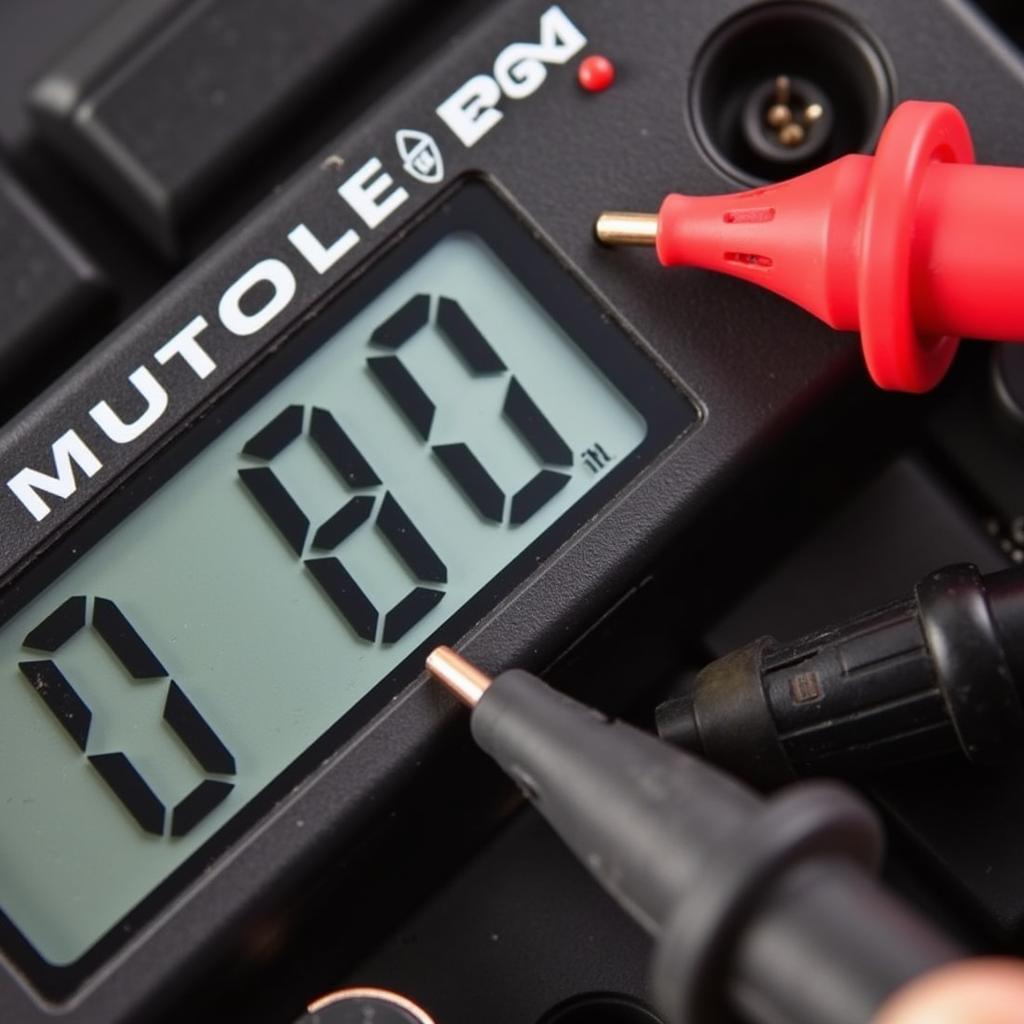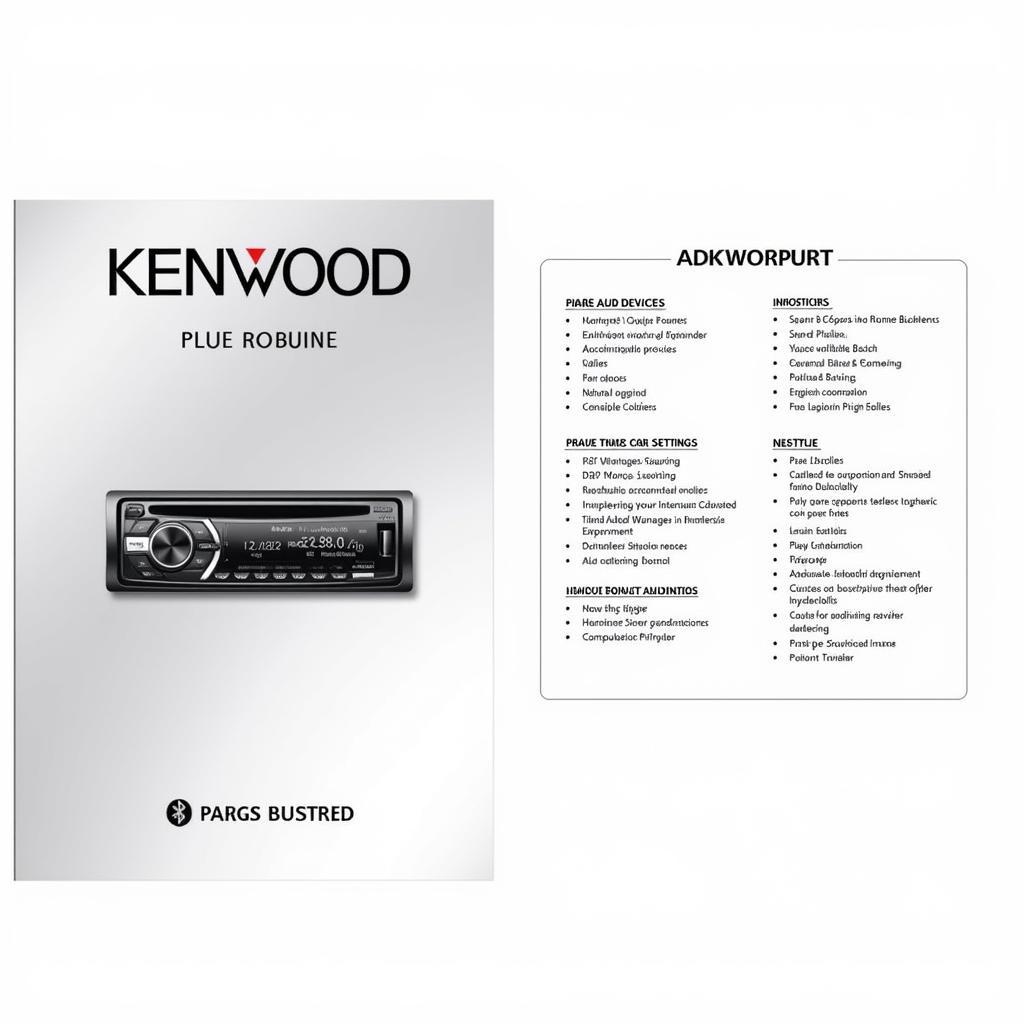A parasitic drain on your car battery can be a frustrating and perplexing problem. It can leave you stranded with a dead battery, even if it’s relatively new. Knowing how to check your car battery for parasitic drain is an essential skill for any car owner. This guide will provide you with a step-by-step process, along with helpful tips and insights to pinpoint the culprit draining your battery’s power. You’ll be back on the road in no time.
Understanding Parasitic Drain
What exactly is a parasitic drain? Simply put, it’s a constant drain on your battery’s power even when the car is off. Several components, such as the clock, radio memory, and security system, require a small amount of power to function. However, a faulty component, a stuck relay, or even a glove box light left on can cause excessive drain, leading to a dead battery. Have you experienced a new car battery completely drained? This might be the reason why.
A small parasitic draw is normal, but a large one can cause serious problems. If you’ve ever had 2010 Dodge Journey battery problems, you know how important it is to identify and resolve these issues quickly.
 Car Battery Drain Test with Multimeter
Car Battery Drain Test with Multimeter
How to Check for Parasitic Drain: A Step-by-Step Guide
Here’s a comprehensive guide on how to check car battery for parasitic drain:
-
Gather your tools: You’ll need a digital multimeter, ideally one with a min/max function.
-
Prepare your vehicle: Turn off all lights, accessories, and ensure the car is completely off.
-
Disconnect the negative battery cable: This is crucial to avoid damaging your multimeter.
-
Connect your multimeter: Set your multimeter to the DC amps setting. Connect the red lead to the negative battery terminal and the black lead to the disconnected negative battery cable.
-
Observe the reading: A reading of 50 milliamps (0.05 amps) or less is generally acceptable. Anything higher indicates a potential parasitic drain. If the battery down car not starting becomes a regular occurrence, you should investigate.
Pinpointing the Culprit
If you’ve determined there’s a significant drain, now comes the detective work:
-
Start with the fuses: One by one, remove each fuse and observe the multimeter reading. A significant drop in the reading when a specific fuse is removed indicates the circuit connected to that fuse is the source of the drain.
-
Check relays: Relays can also stick and cause a drain. Try swapping relays with known good ones to see if the drain disappears.
-
Inspect common culprits: Check interior lights, glove box lights, trunk lights, and door switches. Sometimes a faulty switch can prevent a light from turning off completely.
If you’re concerned about your battery’s lifespan, check out this article about diehard gold battery life. Tesla owners can also learn more about tesla 12v battery issues.
Expert Insights
“Parasitic drains can be tricky,” says automotive electrical specialist, David Miller. “A systematic approach, using a multimeter and checking fuses one by one, is the most effective way to find the culprit.”
Another expert, Sarah Johnson, adds, “Don’t overlook the simple things like interior lights. A faulty switch can be a surprisingly common cause of battery drain.”
Conclusion
Knowing how to check car battery for parasitic drain can save you time, money, and frustration. By following the steps outlined in this guide, you can identify and resolve the issue, ensuring your car starts reliably every time. Don’t let a parasitic drain leave you stranded!
FAQ
-
What is a normal parasitic drain reading? A reading of 50 milliamps (0.05 amps) or less is generally considered normal.
-
What tools do I need to check for a parasitic drain? You will need a digital multimeter, preferably one with a min/max function.
-
What if I can’t find the source of the drain? If you’ve exhausted all troubleshooting steps, it’s best to consult a qualified automotive electrician.
-
Can a parasitic drain damage my battery? Yes, a continuous parasitic drain can significantly shorten the lifespan of your battery.
-
How can I prevent parasitic drains? Regularly inspect your car’s electrical system, ensure all lights and accessories are turned off when the car is not in use, and address any electrical issues promptly.
-
Is it safe to disconnect the negative battery cable? Yes, it is safe to disconnect the negative battery cable, but ensure the ignition is off and all accessories are turned off before doing so.
-
What if my car still won’t start after fixing a parasitic drain? If your battery has been deeply discharged, it may need to be charged or replaced. You may also have other underlying issues.


